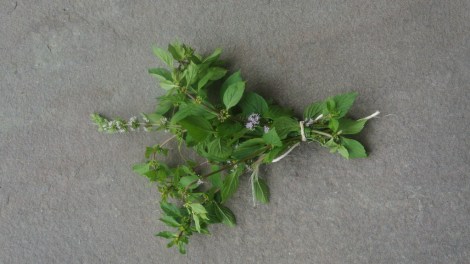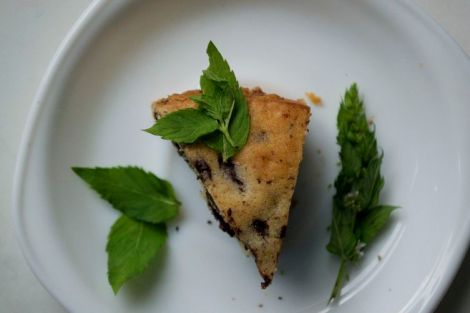Foraged vegetables are always more fun to cook. So Food52’s resident forager, Tama Matsuoka Wong, is introducing us to the seasonal wild plants we should be looking for, and the recipes that will make our kitchens feel a little more wild.
My gardener friends always tell me to plant mint in a container so that it doesn’t take over the entire garden. Mint does like to wander — it spreads quickly on its own like a naturalized citizen of the wild, whether it’s cultivated in a garden or growing wild in a field.
I find wild mint to be so much more fragrant than cultivated mint, and the leaves more tender, even though the wild plants originated from cultivated ones way back when. When I harvest the leaves and bring home a bagful, the entire car is filled with a lovely aroma; this never happens when I bring home mint from the grocery store.

Mia Wong
Mint is an ancient herb that was traditionally used for refreshment and to aid in digestion. It is characterized by leaves that grow opposite each other on square stems (wrap your fingers around the stem and you can feel the four square corners) and a distinct mint flavor and aroma when its leaves are crushed and torn. (Note: There are other plants in the mint family that don’t taste minty, such as lavender bergamot and bee balm.)
Wild mints are fun because they are so varied: Some smell and taste of peppermint or spearmint, while others are spicy. One of my favorite wild varieties is wild spearmint, or Mentha spicata. The flavor is “rounder” and has less menthol than peppermint (Mentha piperita).

Mia Wong.Wild field mint, left, and mountain mint.
There are other wild varieties, too, such as wild field mint (Mentha arvensis), which can be found throughout North America and makes an excellent fresh tea or lemonade. Its flowers form in clusters along the stem, not at the crowns or the stems’ tips. The mountain mints, pycnanthemum tenuifolium and pycnanthemum muticum, have a mint flavor so strong they will make you fall off your chair. You only need a little bit to make mint jelly, which tames their bite and brings out their earthiness. They make a beautiful meadow planting; the bees and butterflies are crazy for these lovely mountain mints, and surround them all summer long.
Mint loves hot, humid summer weather, and we use it all summer long to cool off: in Asian spring rolls and tzatziki, tossed in peas, and over meat. I also love to incorporate it into desserts, like chocolate-dipped wild spearmint leaves and this wild spearmint pear chocolate cake.

Mia Wong
Wild spearmint pear chocolate cake
Adapted from Jean Hwang Carrant
See the full recipe (and save and print it) here.
Makes two loaves (or two round cakes)
14 tablespoons (1 3/4 sticks) salted butter, softened
2 1/4 cups sugar
6 large eggs
2 teaspoons baking powder
2 teaspoons vanilla extract
2 1/2 cups flour
1 teaspoon salt
10 ounces dark chocolate (I used a 9.7-ounce, 70 percent cacao Scharffenberger bar), cut with a knife into small chunks
2 2/3 cups fresh pears, peeled, cored, and cut in to 1/2-inch cubes (about 2 pears)
2 tablespoons (packed) wild spearmint leaves, cut in strips
When foraging, always choose high-quality landscapes (not next to the highway or on post-industrial or sprayed sites), and make sure to obtain permission if it is not your own yard. If possible, go out with an experienced forager. We assume no responsibility for any adverse effects from misidentification or incorrect use of featured wild plants. For more information and identification advice please consult us at meadowsandmore.com.



